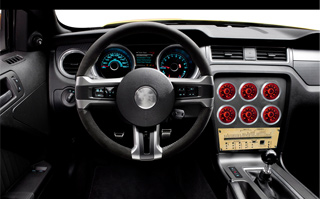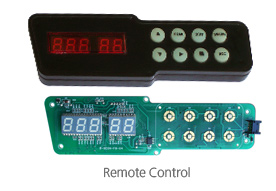Automotive Data Acquisition System
Data acquisition systems for racing car testing and performance monitoring
Data acquisition has become an invaluable tool for establishing racecar - and car/user’s - performance. Now that the ability exists to analyze each and every performance parameter for car and user, accurate use of this data can provide a key advantage on the racetrack.
The level of competition is extremely tough, and it is not going to get easier in the near future. Track time is a valuable commodity. To get the most out of your track time, you need to gather as much information as possible in a limited amount of time. DA as a driver development tool has real value. The opportunity that DA systems offer to teams, developing drivers, and crew chiefs is a very real advantage.
Data acquisition gives you a group of numbers that you can arrange as a picture to better communicate what is happening on the track. With a computer and DA software, you can arrange the data in a graphical format that gives you a clearer picture of what is happening on the track instead of a mere stream of numbers on a screen or sheet of paper.
Ascenten developed GCON data acquisition system for a reputed USA based customer. It is a complete “Data Acquisition Systems” specifically designed for racing car. This data acquisition is happening in real time, while the car is on trace, and it is happening automatically, without any user’s input or special actions from the user. With a Data acquisition system, we have the ability to trace specific functions on the race car in real time, and we can do some analysis and determine if performance is increasing or decreasing.
We also can look at engine rpm and a variety of temperatures and pressures from oil, water, intake, exhaust etc. User can also configure warning limits in all parameter. System will give warning indicator if respective parameter crosses the set limits of rpm, temperature, pressure etc. As systems developed, the software interface became more users friendly. We can store real time data in memory card and can do analysis later on using software interface.
Major functions performed by the system:


- Low Temperature Measurement
- Oil Temperature
- Water Temperature
- General Purpose Low Temperature
- Transmission Temperature
- High Temperature Measurement
- Exhaust Gas Temperature
- Pressure Measurement
- Fuel Pressure
- Oil Pressure
- Manifold Pressure
- Brake Pressure
- Nitrous Pressure
- Transmission Pressure
- Water Pressure
- Supply Voltage
- Fuel Level Measurement
- MPH
- RPM
- Air fuel ratio measurement
- Warning Indication
- Real time data storage and play back function
- Support maximum seventy type of different gauge configuration
 |
 |
The system includes:
- Data Logger unit with extended memory in front box
- Multiple session recording without having to download into a personal computer
- Electronics for PC interface and windows based software for later analysis
- Multi speed playback
The complete system diagram is as below:

The complete GCON system consists of major three elements (A) DAQ (B) Front Box and (C) Multiple Gauge. There are 27 types of sensors used in this system. DAQ box is core unit of system and it performs measurement function of various temperatures, pressure, RPM etc. DAQ box is connected with Front box and first gauge using RS-485 communication protocol. DAQ box consists of 16-bit microcontroller, Signal conditioning sections, memory, power supply section and communication section. DAQ box manipulate the data received from different sensor and display on relative gauge.
Front box is nothing but like as remote control of the system. User can set parameters of various functions like as warning limit, peak mode, Difference mode, Increment – Decrement function, record and playback function etc. Front box consists of external memory card up to 4GB. Using record function, user can store real time data in external memory card.
Analog gauge in the system displays the measured value by DAQ. It also indicates warning with LED and buzzer if any parameter crosses the threshold value. First gauge connects with DAQ box using RS-485 protocol and then after subsequent gauge connects with previous gauge using RS-485 connection.
The Challenge
- To configure 70 types of different gauge configurations in a single system
- The data acquisition system here has used 27 types of sensors. These sensors sense things such as: temperature, pressure, position, force, and acceleration to name a few.
- One additional perk of DAQ is in fault finding. An engineer at a computer in the pits is able to constantly monitor performance parameters of the vehicle in real time. The engineer will be able to notice problems beginning to occur before they become serious and action can be taken accordingly
- Real time data storage and playback
- High temperature measurement up to 1200 degree centigrade with 1% accuracy
Key Solution
- Fully functioning, integrated Data Acquisition System
- Simple optimization of the system
- The design package shall allow the system to be transferred to new cars in the future with relative ease.




